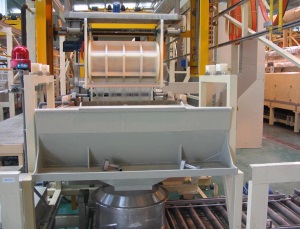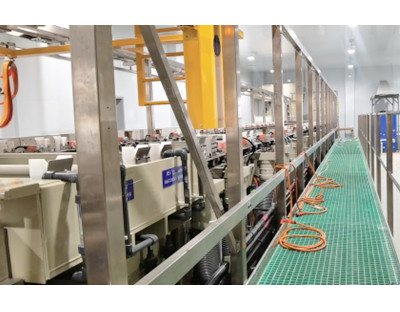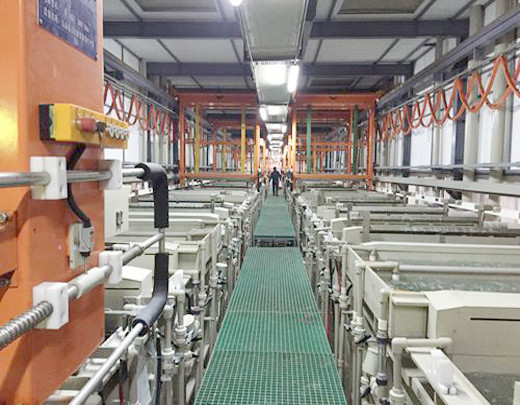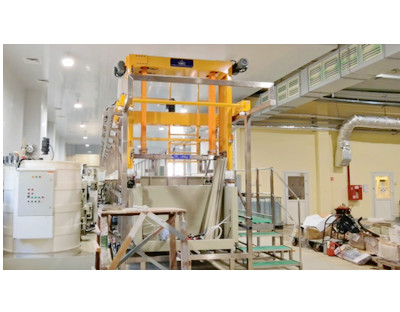The poor brightness of the coating mostly occurs in the low current density area, and occasionally occurs in the medium current density area or the high current density area. The poor brightness of the coating in the low current density area may be caused by the high temperature of the plating solution, the low current density, the low concentration of the main salt, the excessive secondary brightener or the presence of copper and zinc impurities in the plating solution; The poor brightness of the coating in the middle current density area may be caused by too little secondary brightener, too much organic impurities or a certain amount of iron impurities; The poor brightness of the coating in the high current density area may be caused by too high pH value of the plating solution, too little primary brightener or a small amount of chromate, phosphate and lead impurities in the plating solution. In addition, poor pretreatment, alkali film or organic adsorption film on the surface of the plated part, or poor bottom plating may also lead to poor brightness of the nickel layer.
When analyzing this kind of fault, take the nickel plating solution to conduct Hull cell test first. If the coating on the cathode test piece of Hull cell is in good condition and there is no phenomenon of poor brightness after multiple tests, then the fault occurred during electroplating may be caused by poor pretreatment or poor bottom layer. The pretreatment and bottom layer should be carefully checked. If there is poor coating brightness in low, medium or high current density areas on the cathode test piece obtained by Hull cell test, it can be analyzed according to the possible reasons mentioned above.
Fault phenomena one: poor coating brightness in low current density area
Cause analysis and treatment method
(1) Bath temperature too high
In the nickel plating bath, with the increase of temperature, the conductivity of the bath increases and the current efficiency increases, but the polarization of cathode and anode decreases; If the temperature is too high, the water evaporation of the plating solution is large, which increases the tendency of hydrolysis of salts and precipitation of hydroxides, especially the hydrolysis of iron impurities, which is easy to form pinholes; The dispersion ability of the plating solution decreases, and the brightness in the low current density region is poor
Treatment method: control the temperature of nickel plating solution to the standard value
(2) The cathode current density is too small
The cathode current density is too small, and the coating in the low current density area is thin, or even cannot be plated, so the brightness is poor
Treatment method: reasonably set the current value
(3) The content of nickel sulfate is too low in the bright nickel plating solution, the content of nickel sulfate is low, the light height and flatness of the coating are poor, and the content is too low, which will make the deep concave part (i.e. the low current density area) of the coating not bright
Treatment method: regularly analyze and adjust the composition of the plating solution to control its content above 250G / L
(4) Excessive secondary brightener
The secondary brightener content is high, and the brightness of the coating is good, but the tensile stress of the coating increases, resulting in brittleness of the coating. If the content is too high, the coating is bright and dark, and the coating in the low current density area of the workpiece is gray, and the coating in the high current density area is brittle
Treatment method:
- electrolysis for a long time (DK = 0.25A / DM2);
- use activated carbon adsorption treatment to reduce its content
Fault phenomenon two: in the current density area of the coating brightness difference
Possible causes: cause analysis and treatment methods
- Too little secondary brightener
In the nickel plating solution, when the saccharin content is sufficient, the brightness of the nickel layer mainly depends on the content of the secondary brightener. When the content is low, the brightness of the coating is poor, and the mirror bright coating cannot be obtained. If there is poor brightness of the coating on the test piece of Hull cell test, add appropriate amount of 1,4-butynediol (or other secondary brightener) to the plating solution, and the brightness of the coating on the test piece will be significantly improved. Moreover, the coating at the high current density is not brittle, and the coating at the low current density is not brittle
There is no gray phenomenon, which proves that there is too little secondary brightener in the original plating solution, and it should be supplemented appropriately
Treatment method: adjust the content of secondary brightener by Hull cell test
(2)See the cause analysis and treatment method of fault phenomenon L (3) for more organic impurities
- See the cause analysis and treatment method of fault phenomenon L (6) for excessive iron impurities in the plating solution







 Mar. 07, 2022
Mar. 07, 2022 





